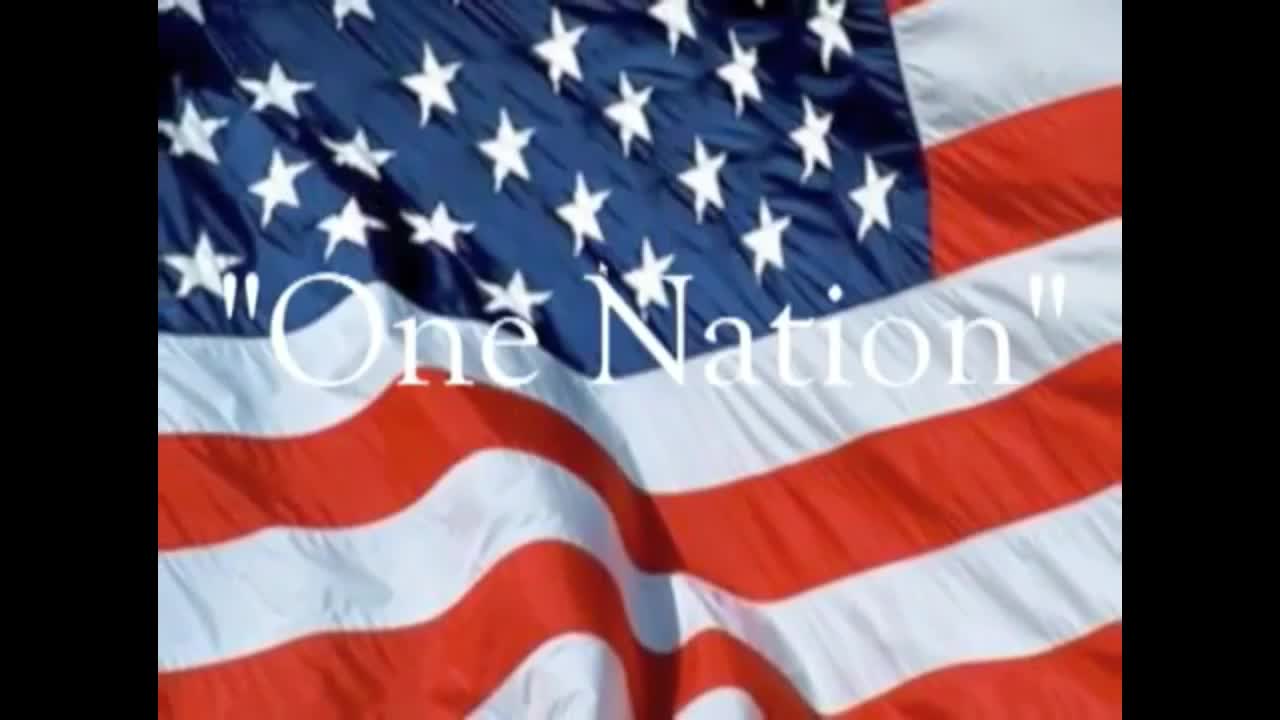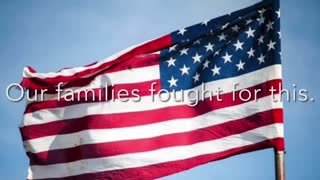Premium Only Content

The Pledge of Allegiance explained and articulated 🙏🏻🇺🇸❤️✝️
My channel on YouTube mirrors my channel here.
https://youtube.com/channel/UCa9C4Vdi540hfx9SaXm7T7g
Thirty-one words which affirm the values and freedom that the American flag represents are recited while facing the flag as a pledge of Americans’ loyalty to their country. The Pledge of Allegiance was written for the 400th anniversary, in 1892, of the discovery of America. A national committee of educators and civic leaders planned a public-school celebration of Columbus Day to center around the flag. Included with the script for ceremonies that would culminate in raising of the flag was the pledge. So it was in October 1892 Columbus Day programs that school children across the country first recited the Pledge of Allegiance this way:
I pledge allegiance to my Flag and to the Republic for which it stands: one Nation indivisible, with Liberty and Justice for all.
Controversy continues over whether the author was the chairman of the committee, Francis Bellamy — who worked on a magazine for young people that published the pledge — or James Upham, who worked for the publishing firm that produced the magazine. The pledge was published anonymously in the magazine and was not copyrighted.
According to some accounts of Bellamy as author, he decided to write a pledge of allegiance, rather than a salute, because it was a stronger expression of loyalty — something particularly significant even 27 years after the Civil War ended. “One Nation indivisible” referred to the outcome of the Civil War, and “Liberty and Justice for all” expressed the ideals of the Declaration of Independence.
The words “my flag” were replaced by “the flag of the United States” in 1923, because some foreign-born people might have in mind the flag of the country of their birth, instead of the U.S. flag. A year later, “of America” was added after “United States.” No form of the pledge received official recognition by Congress until June 22, 1942, when it was formally included in the U.S. Flag Code. The official name of The Pledge of Allegiance was adopted in 1945. The last change in language came on Flag Day 1954, when Congress passed a law which added the words “under God” after “one nation.”
Originally, the pledge was said with the hand in the so-called “Bellamy Salute,” with the hand resting first outward from the chest, then the arm extending out from the body. Once Hitler came to power in Europe, some Americans were concerned that this position of the arm and hand resembled the salute rendered by the Nazi military. In 1942, Congress established the current practice of rendering the pledge with the right hand placed flat over the heart.
Section 7 of the Federal Flag Code states that when not in military uniform, men should remove any headdress with their right hand and hold it at the left shoulder, thereby resting the hand over the heart. People in military uniform should remain silent, face the flag and render the military salute.
The Flag Code specifies that any future changes to the pledge would have to be with the consent of the president.
The Pledge of Allegiance now reads:
I pledge allegiance to the flag of the United States of America and to the Republic for which it stands, one Nation
under God, indivisible, with liberty and justice for all.
-
 0:36
0:36
angelam418
4 years agoI Still Pledge My Allegiance
93 -
 1:10
1:10
Dream Believe Realize Network
4 years ago $0.05 earnedPledge of Allegiance 3-12-21
164 -
 0:24
0:24
Kekistani Rumblings
4 years ago $0.01 earnedA Patriot's Pledge of Allegiance
433 -
 0:18
0:18
AmericanDad2020
4 years ago6 year olds improvised Pledge of Allegiance
63 -
 0:23
0:23
Custom
4 years agoYoung Man Doing The Pledge of Allegiance
1487 -
 1:56:23
1:56:23
Law&Crime
2 hours ago $0.63 earnedLIVE: Adelson Matriarch Murder Trial — FL v. Donna Adelson — Day 3
10.7K -
 LIVE
LIVE
Major League Fishing
4 days agoLIVE! - Fishing Clash Team Series: Challenge Cup - Day 3
153 watching -
 LIVE
LIVE
Surviving The Survivor: #BestGuests in True Crime
2 hours agoCourt Stream: Donna Adelson Trial DAY 3 of Testimony
54 watching -
 LIVE
LIVE
Wendy Bell Radio
6 hours agoWhat Hill Will Democrats Choose To Die On?
7,417 watching -
 1:15:15
1:15:15
JULIE GREEN MINISTRIES
4 hours agoTHE CIA HAS BEEN A GIANT IN THIS LAND THAT WILL BE TAKEN OUT
91.4K164